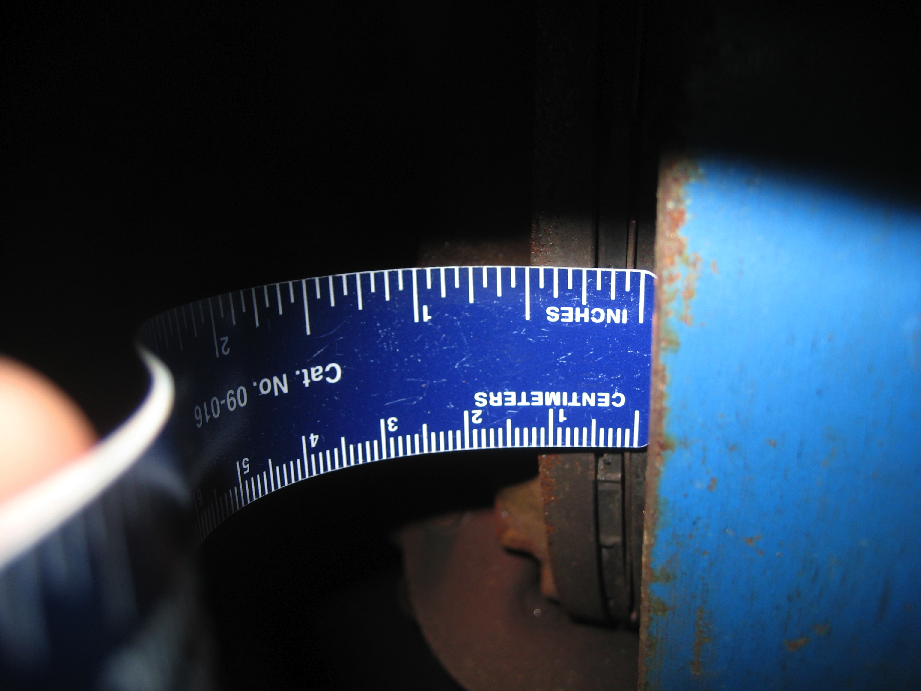284 International
Veteran Member
- Joined
- Jun 28, 2010
- Messages
- 1,466
- Tractor
- International Harvester 284
I just picked up a Ford 1700 that needed a starter. While I waited, I wanted to start it and move it around, so I tried pull starting it. However, the clutch is slipping. The clutch disk has what appears to be ample material left:

The ruler has a space of about 2 mm from the edge to where the measurements start. I have seen in this thread that the thickness of the material of a new clutch is supposed to be 5/16", right about where this one is.
I have adjusted the pedal, and have tried it with the linkage entirely disconnected, so it isn't hanging on anything external, it just slips.
I don't see any sign of oil seepage into the case.
What should/could I try to avoid splitting this thing? Is there a shortcut I'm ignorant about to fixing a slipping clutch? Thanks in advance.

The ruler has a space of about 2 mm from the edge to where the measurements start. I have seen in this thread that the thickness of the material of a new clutch is supposed to be 5/16", right about where this one is.
I have adjusted the pedal, and have tried it with the linkage entirely disconnected, so it isn't hanging on anything external, it just slips.
I don't see any sign of oil seepage into the case.
What should/could I try to avoid splitting this thing? Is there a shortcut I'm ignorant about to fixing a slipping clutch? Thanks in advance.

